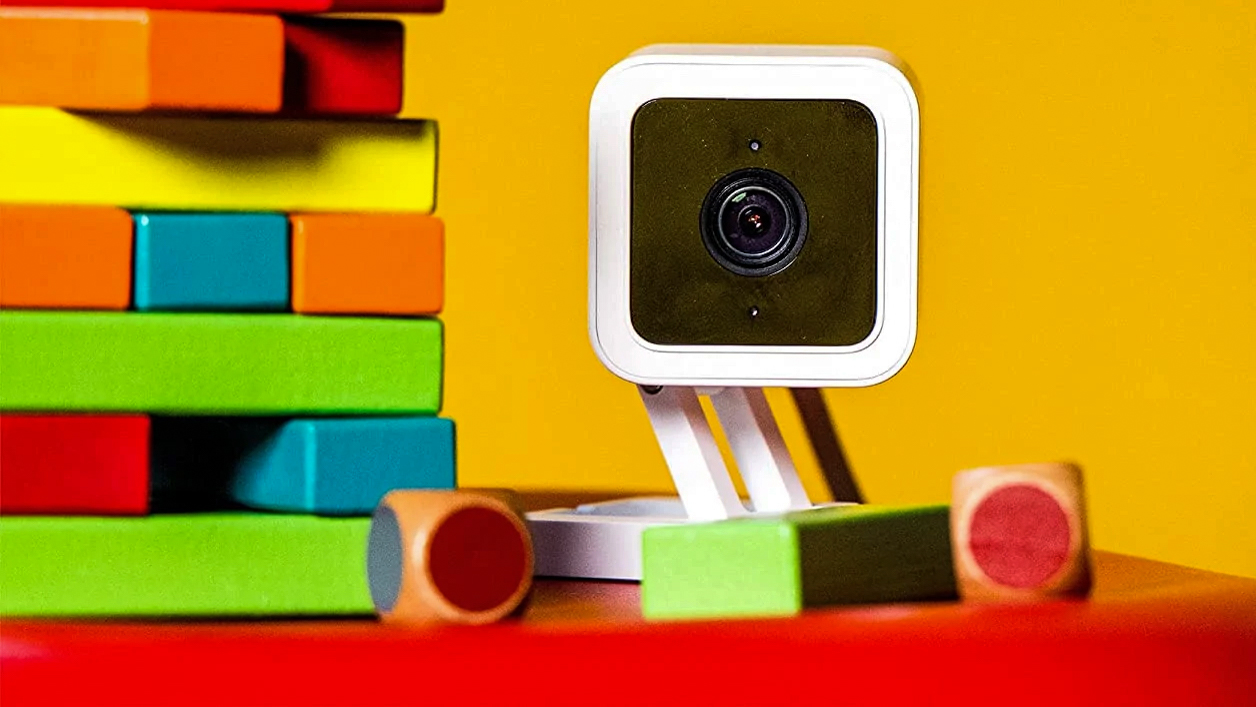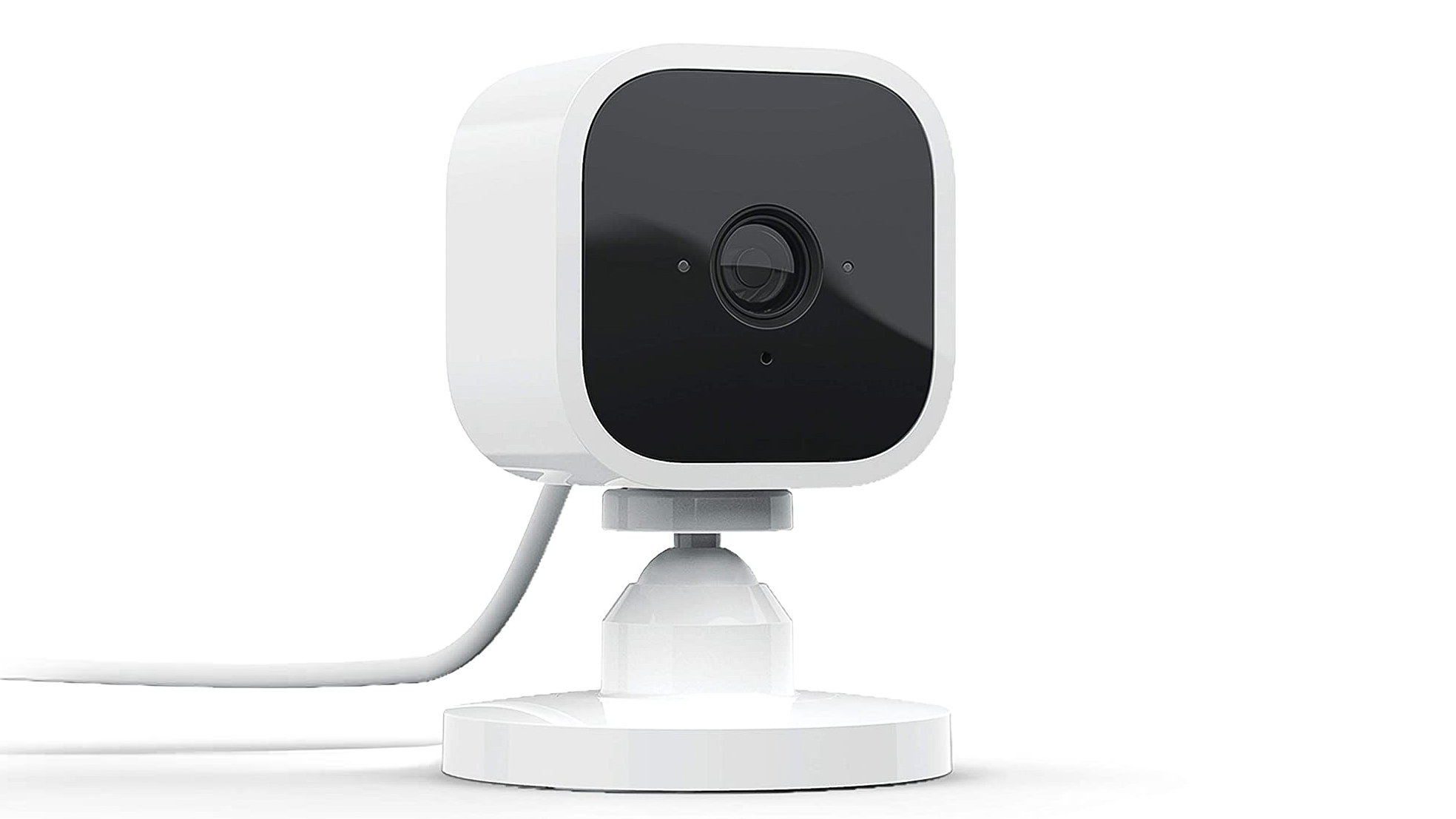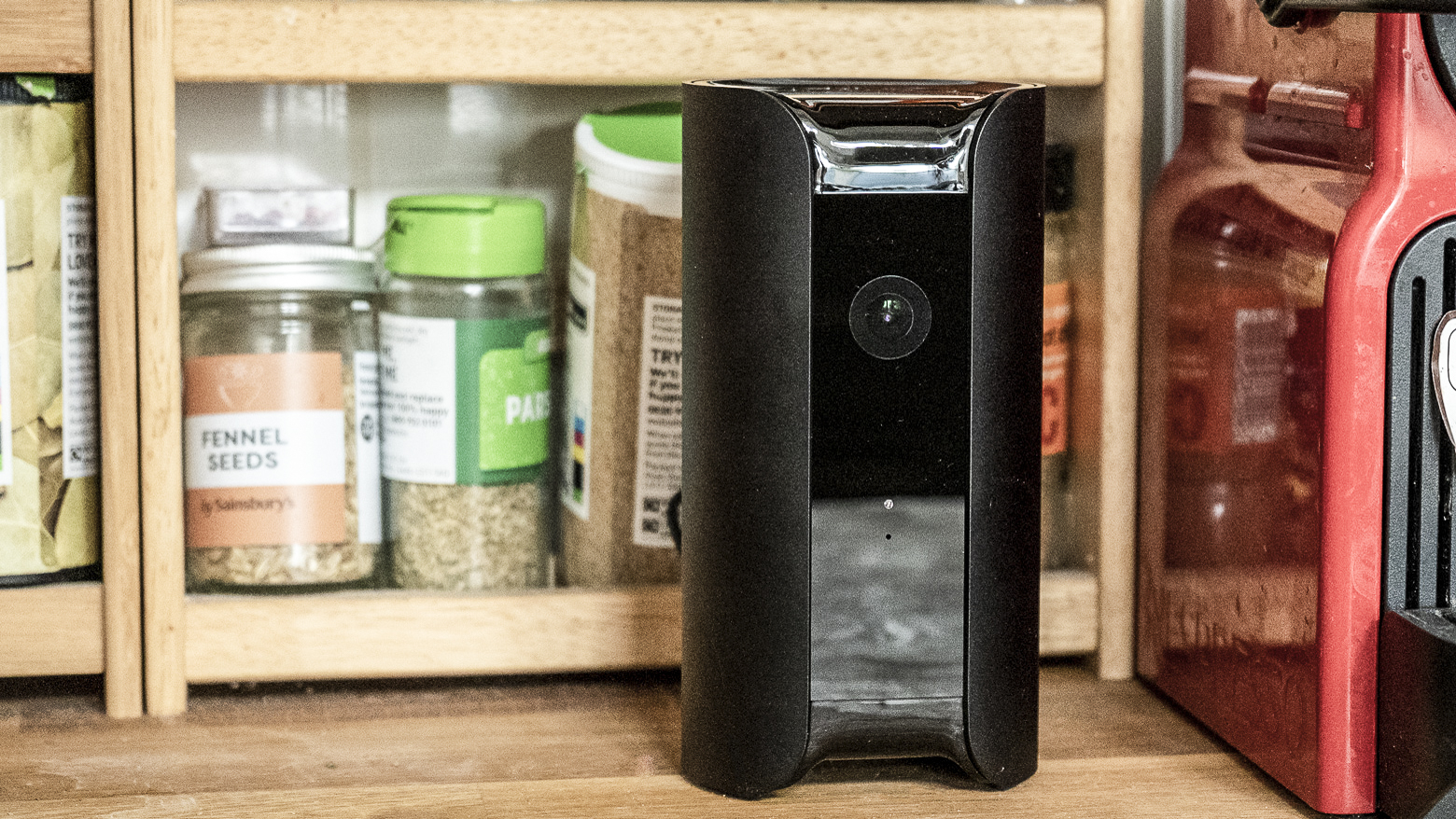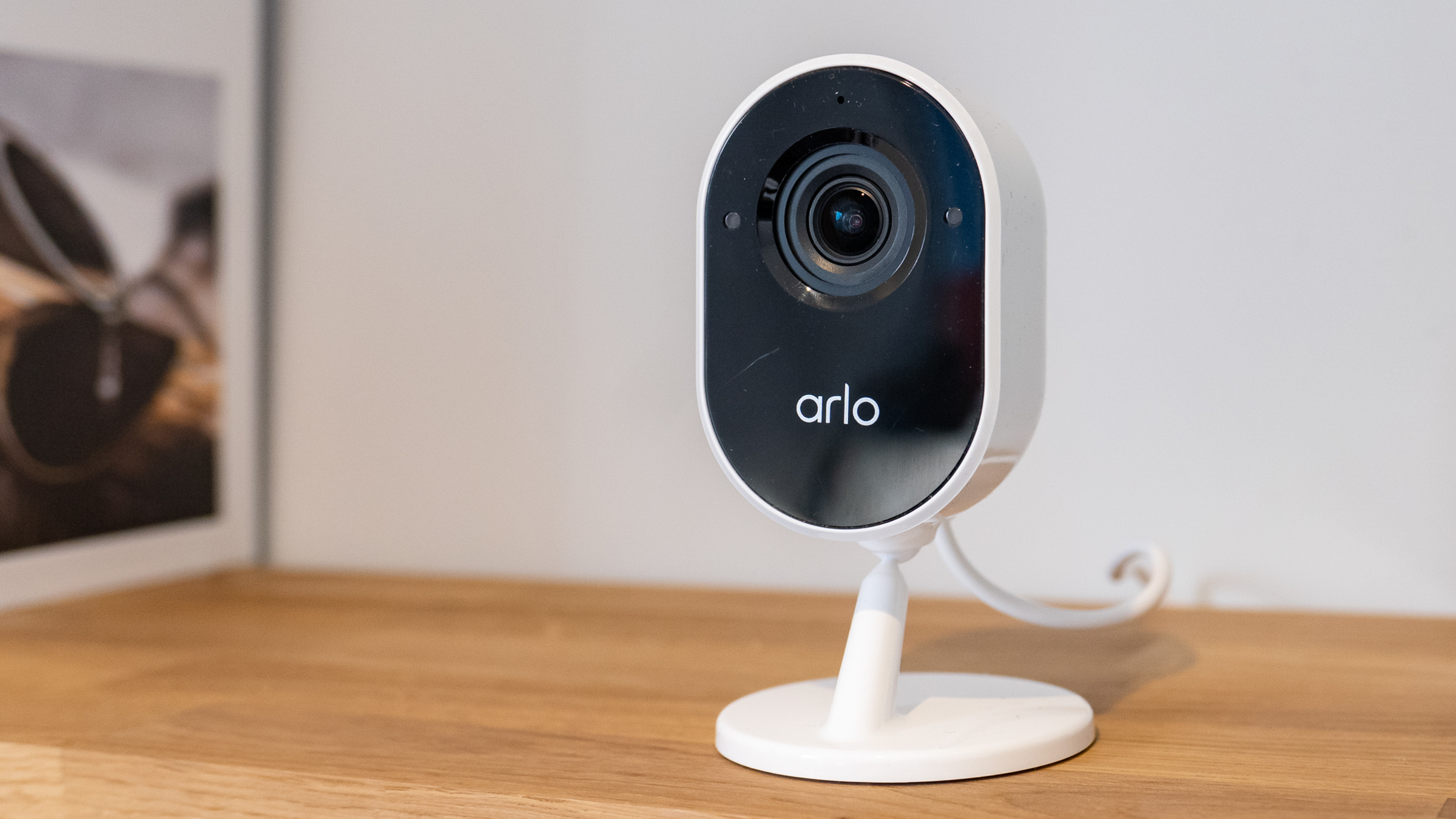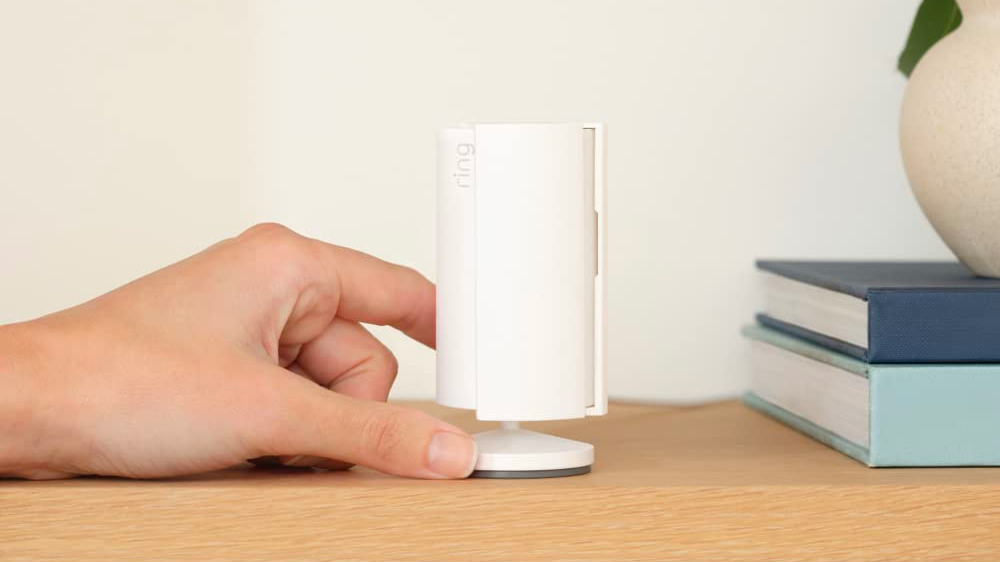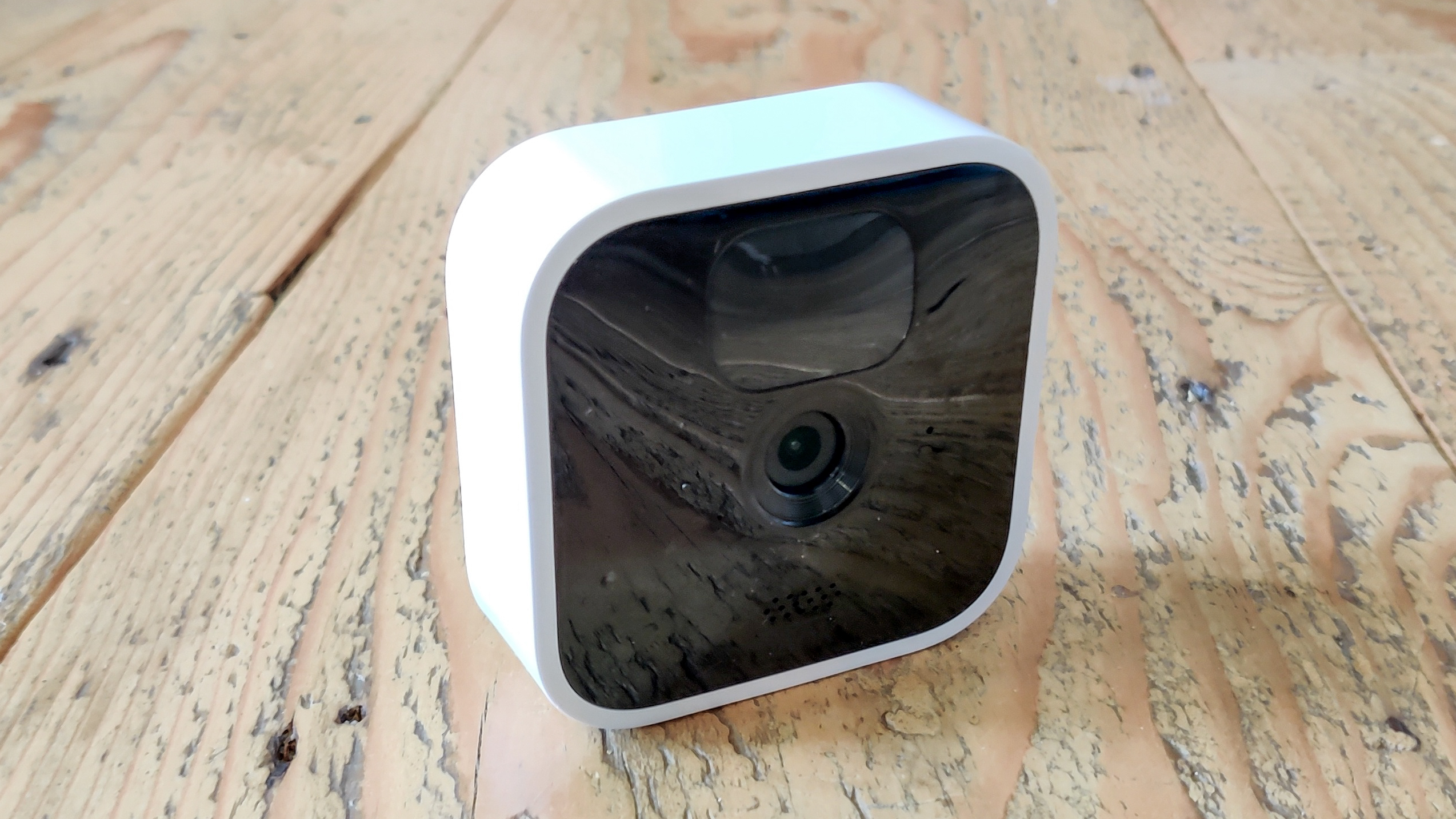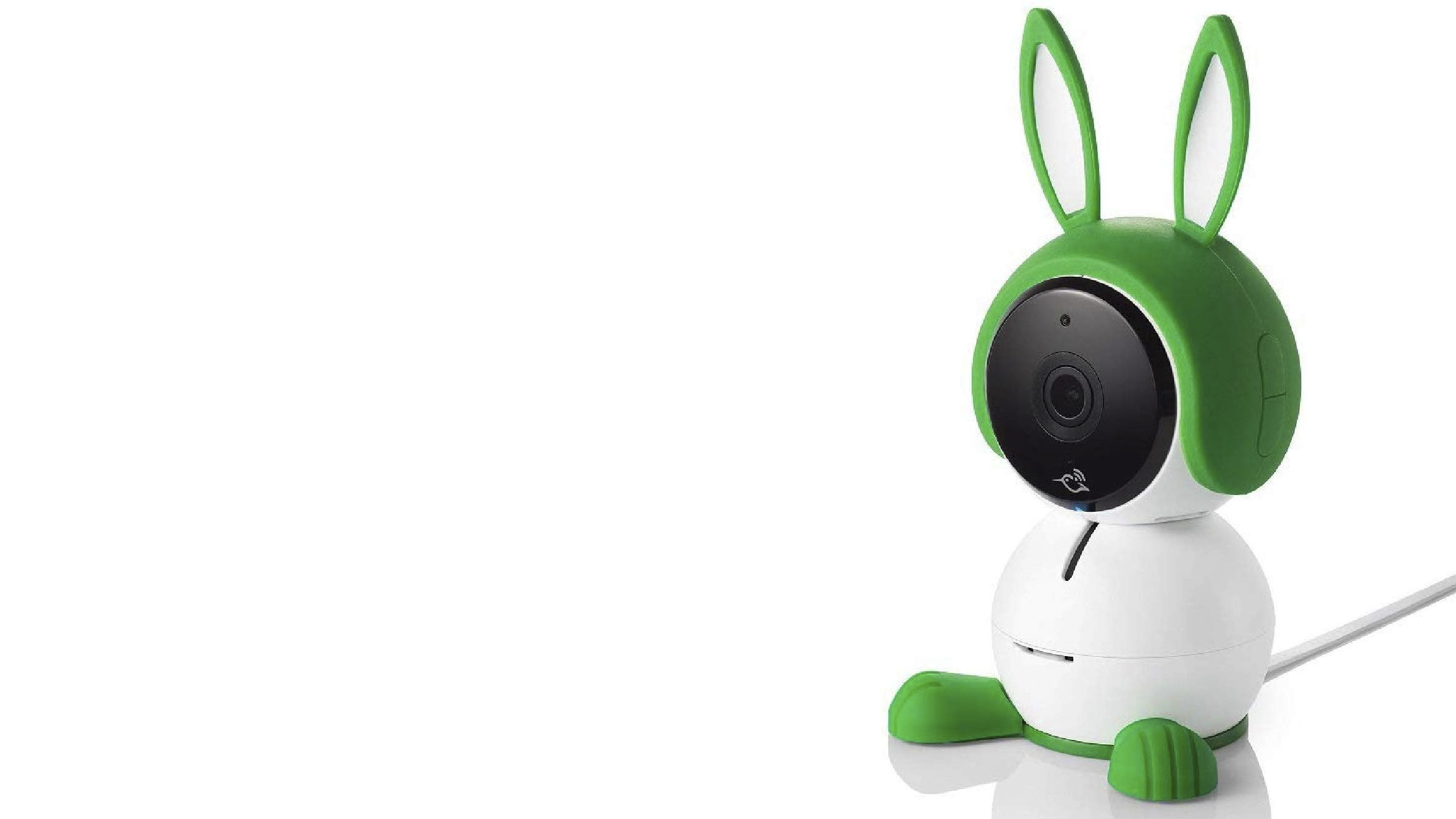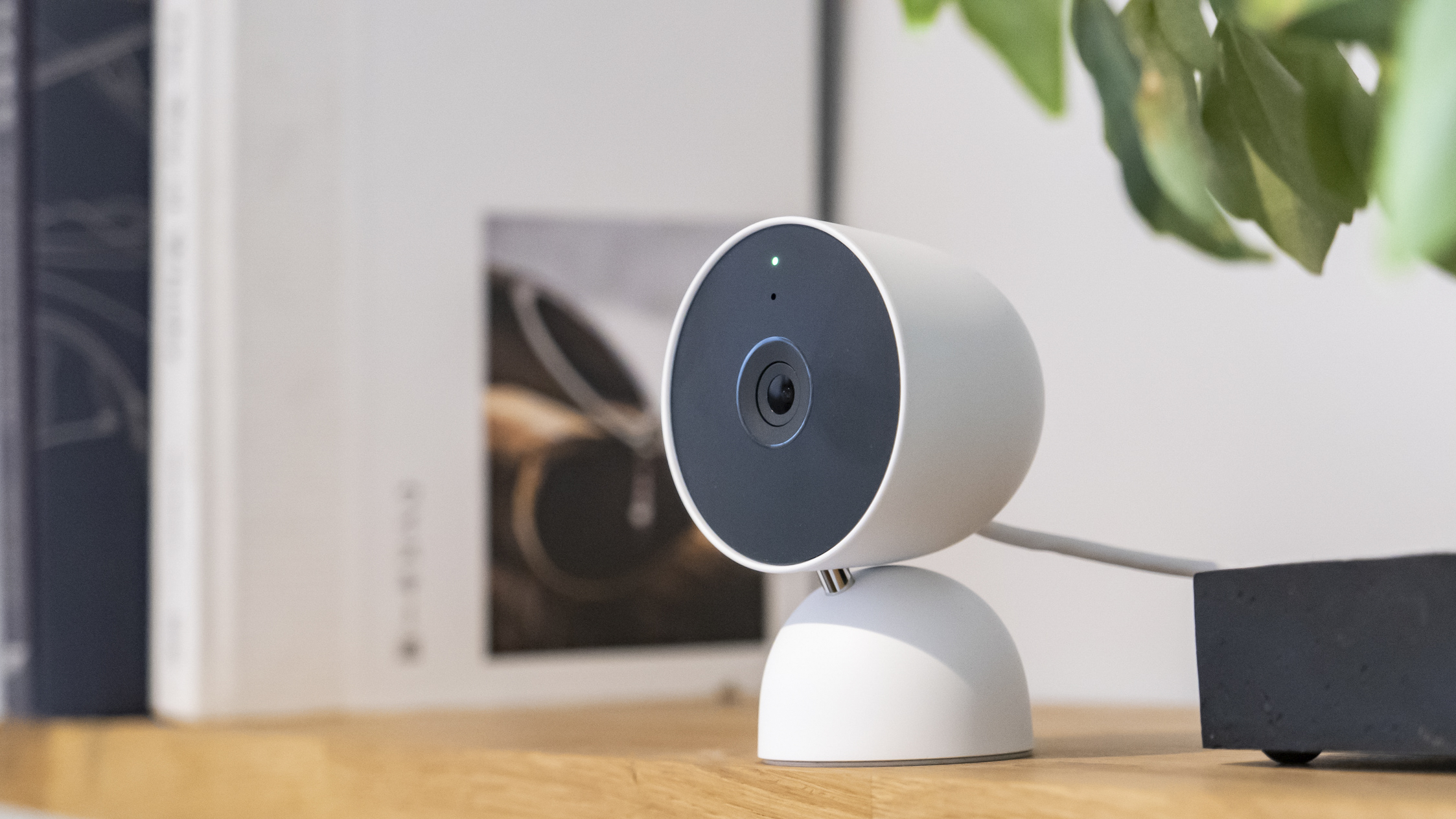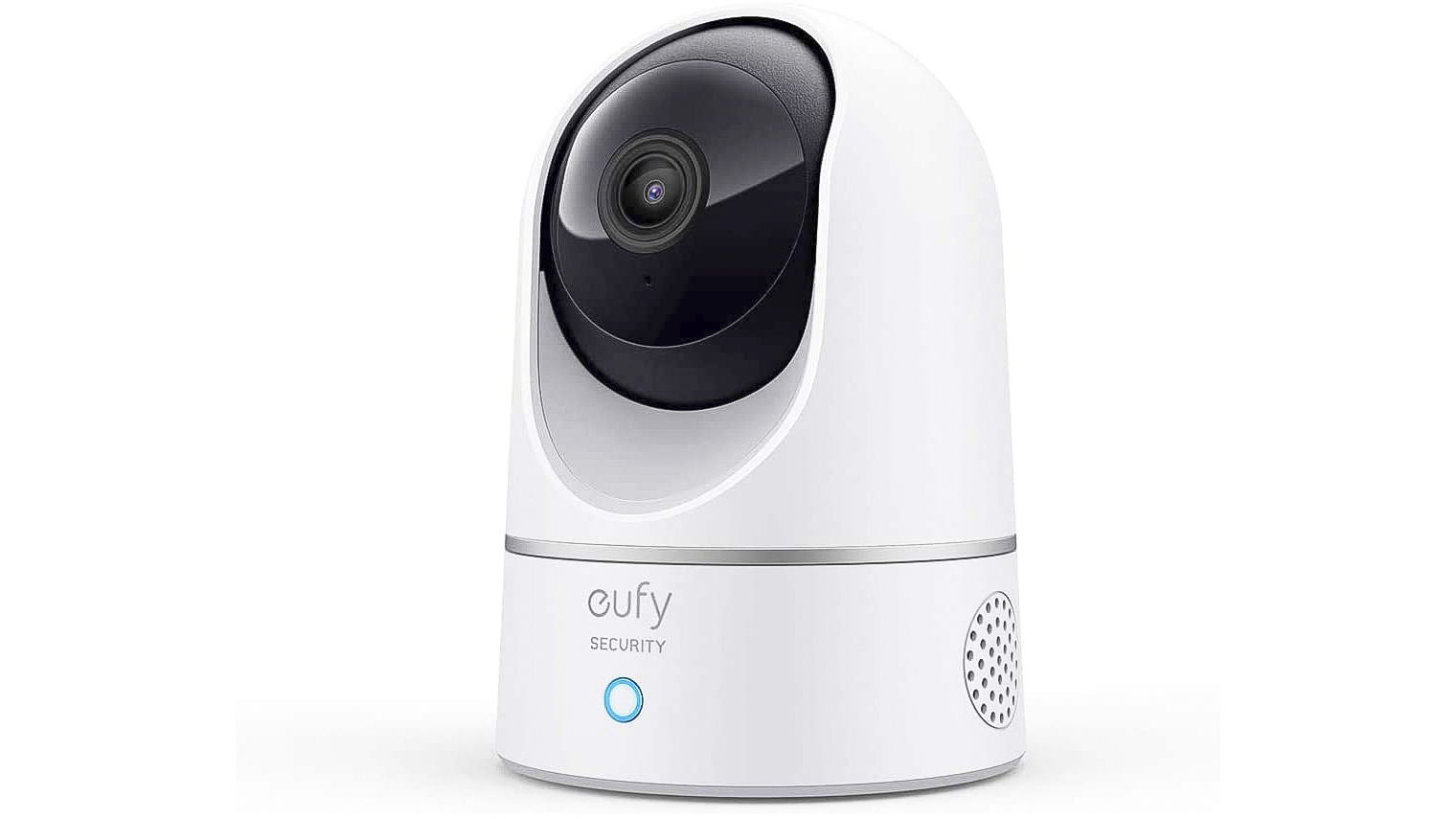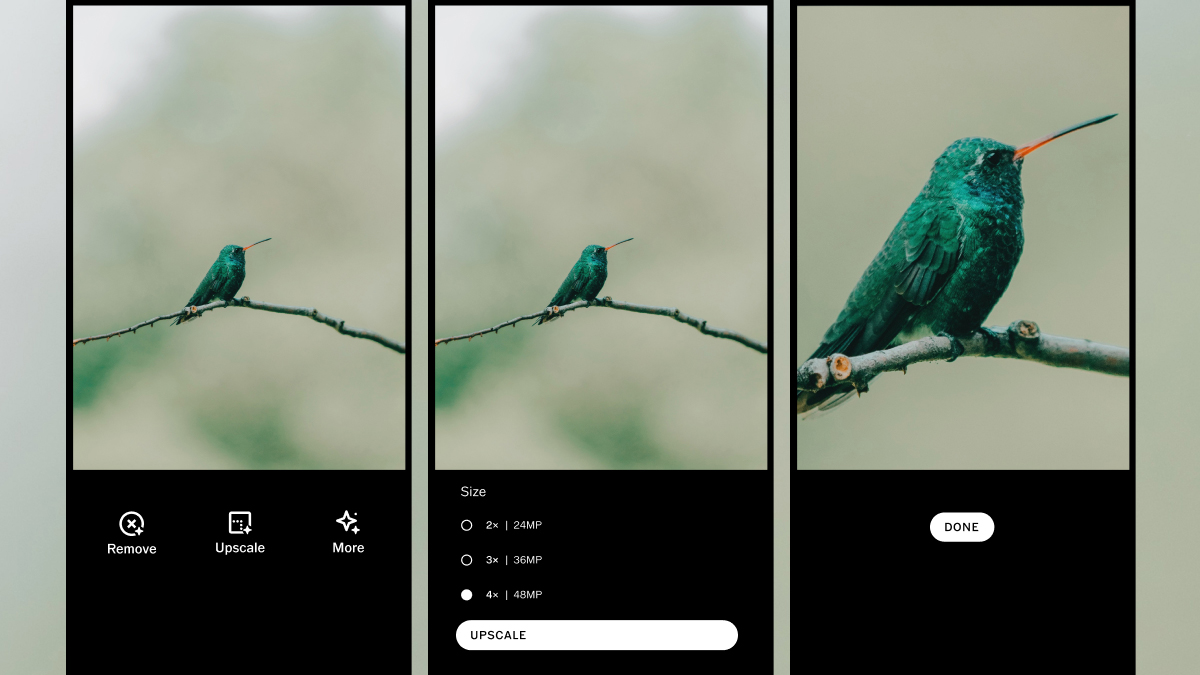The best indoor security cameras for your home
With the best indoor security cameras you can keep an eye on your property and your loved ones wherever you are
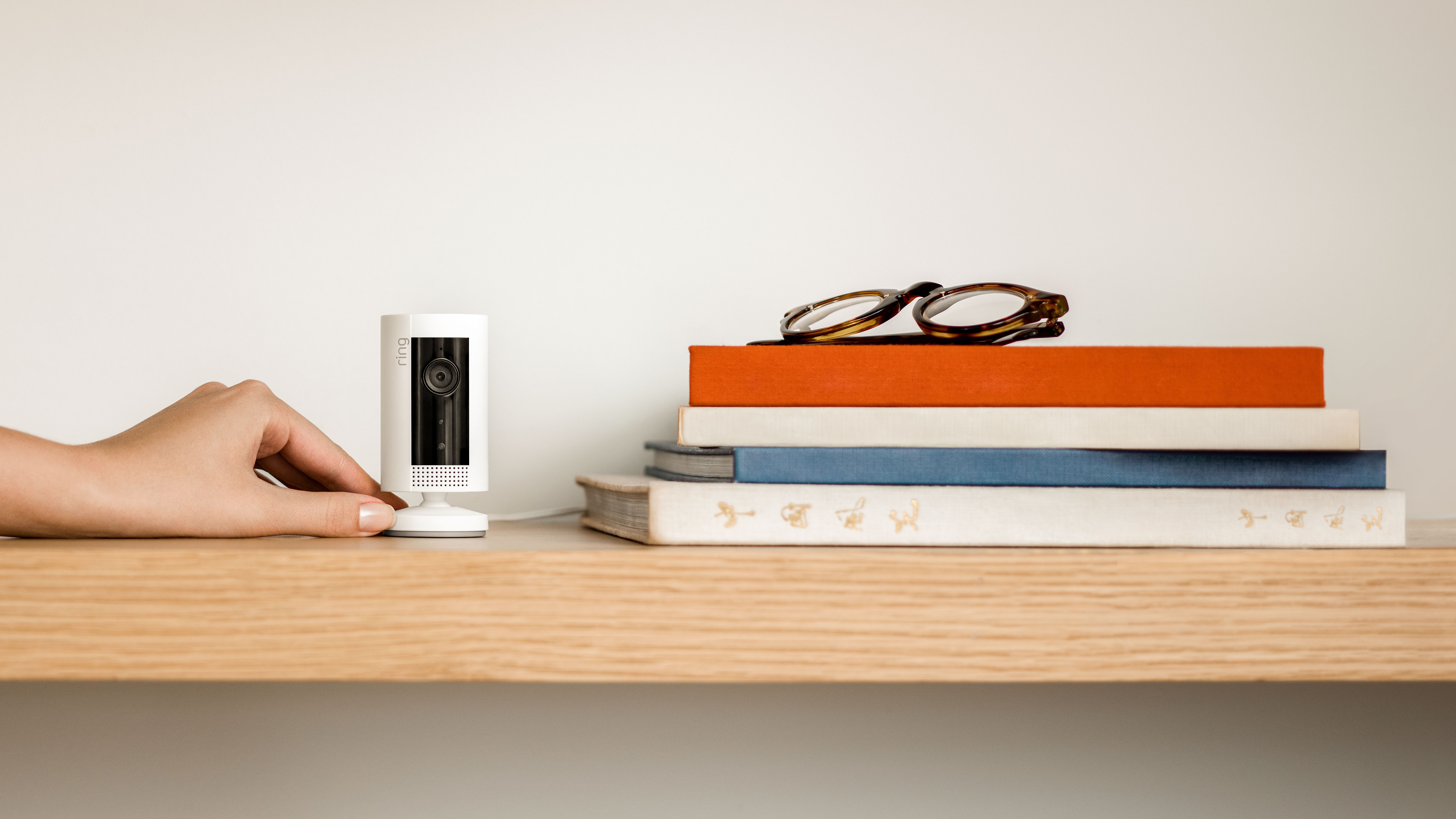
Looking for the best indoor security camera solution for your home or office? This guide will take you through all the best options, at a range of features, so you can choose the one that suits your needs.
If you’ve ever found yourself wondering exactly what was happening back at home, or needed to remotely reassure your favorite pet, a smart security camera is exactly what you need. The best ones offer a high-definition view, built-in microphones and speakers for live chat, and simple and familiar control via an app.
Your home Wi-Fi provides the ideal backbone for an immensely sophisticated home security system, one which can take advantage of the power of artificial intelligence, remote backup, and the screen you carry with you all the time. As well as the system’s own app, look for compatibility with your preferred smart home platform e.g. (Amazon Alexa/Google Assistant/Apple HomeKit) or IFTTT (useful if you want to create more personal controls).
Rather than just record hours of footage, the cameras in this list all feature some form of motion activation. Smarter ones can distinguish humans from other motion. This is used to decide whether to record a clip and/or alert you. Alerts can come to your phone and might need a custom app. Some will can also be set to activate themselves while you’re away using geofencing.
If you are in a rented space, installing indoor cameras is unlikely to upset your landlord; most can be placed on a shelf or using magnets which prevents damage. We’ve added a list of additional things to think about below the list, but for now let’s look at the cameras…
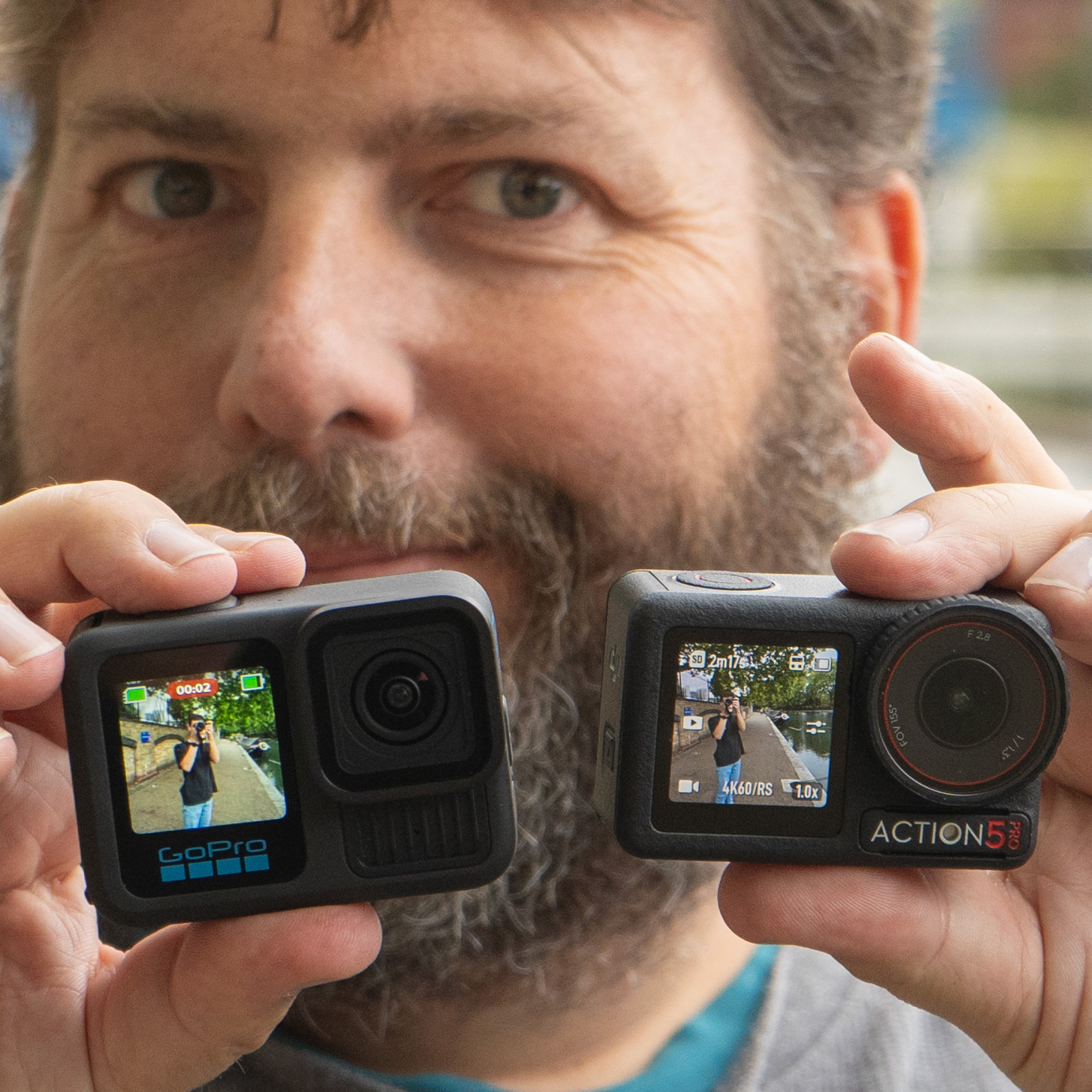
Adam has been obsessed with looking at cameras and gadgets for his whole life, and has developed a deep knowledge of special-purpose cameras, including security cameras, PTZ cameras, webcams and action cams.
The Quick List
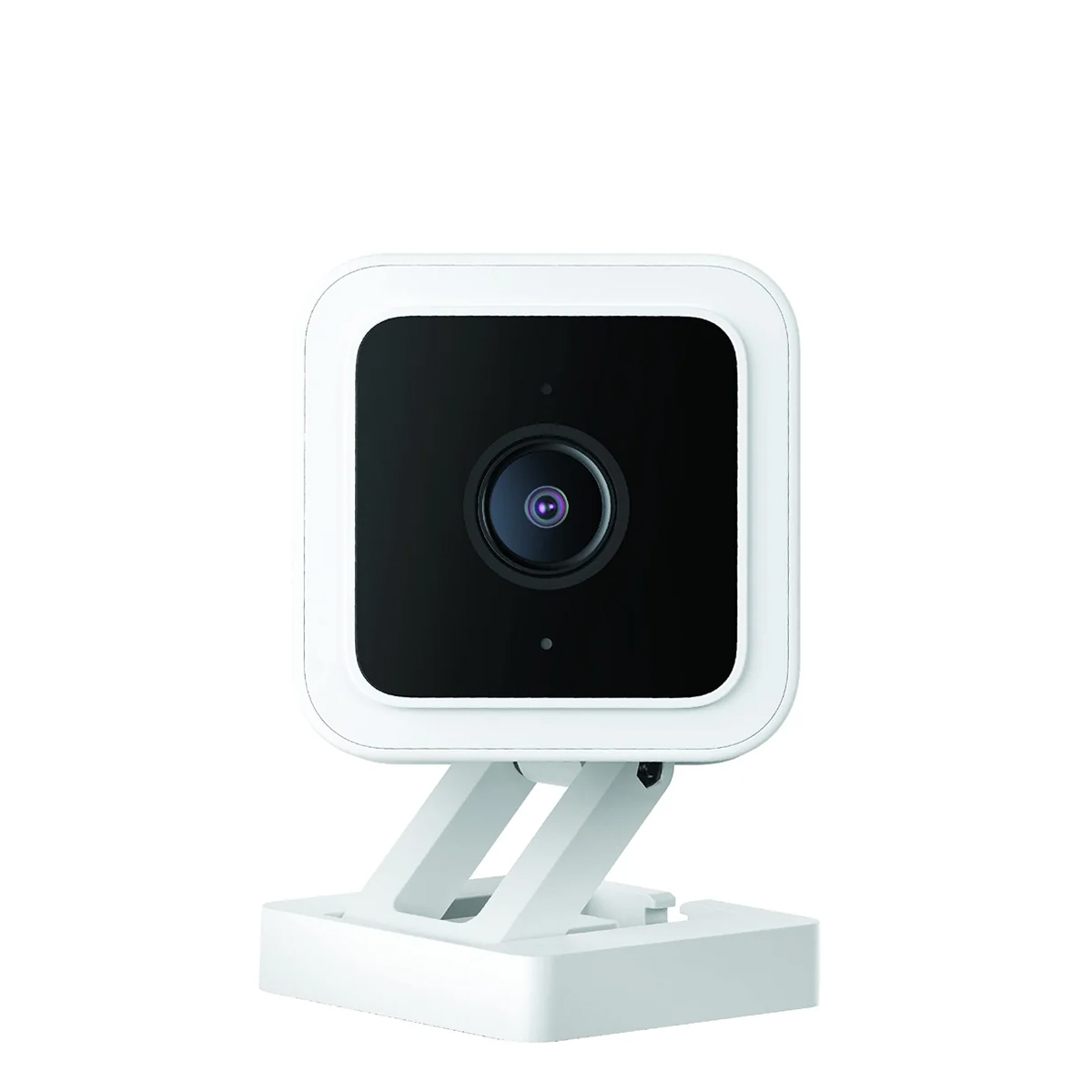
For a competitive price, this camera offers support for the biggest names in smart home technology, plus a rich feature set. Read more below…
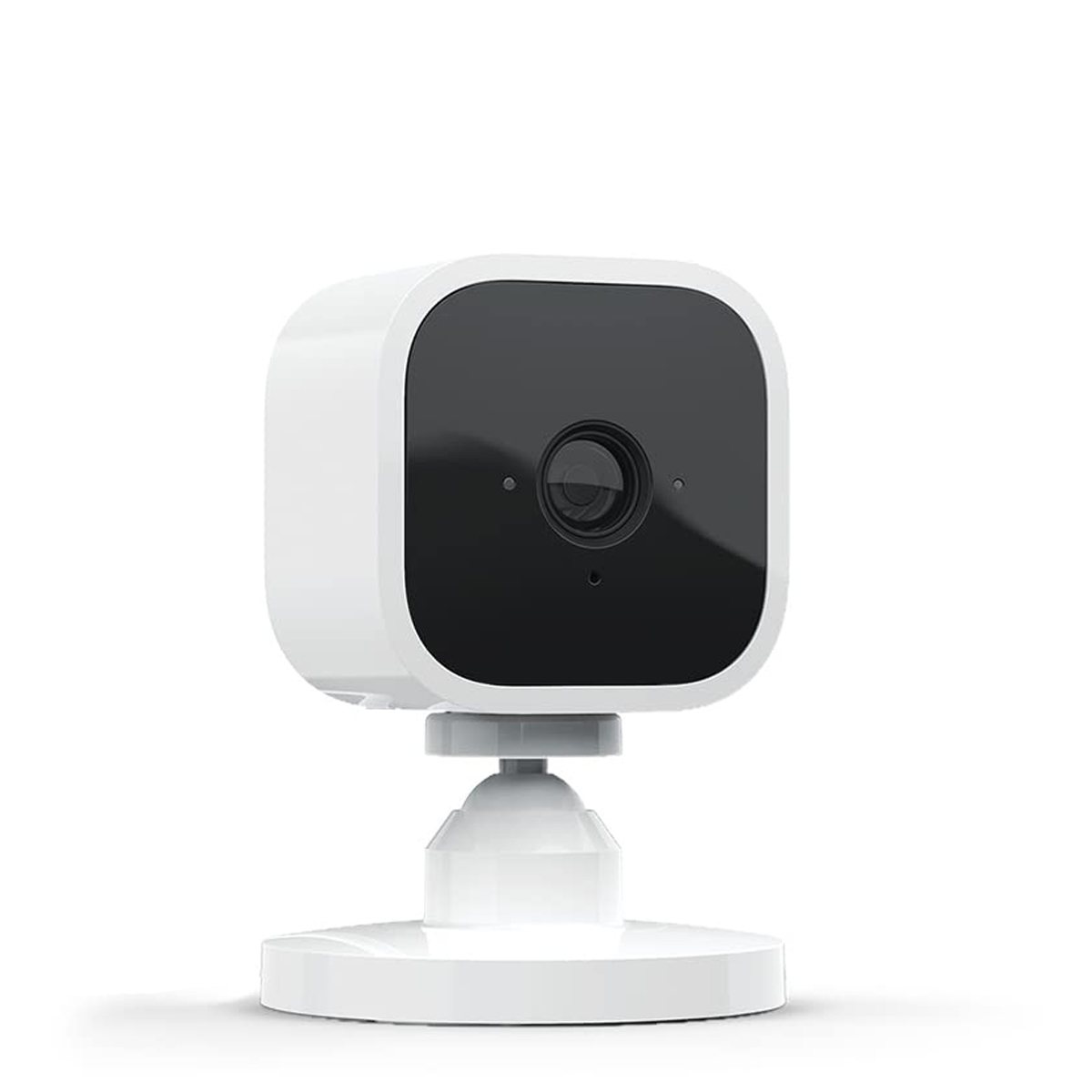
Small and attractively priced, the Blink Mini has a versatile mount, easy setup and compatibility with the Echo Show. Read more below…
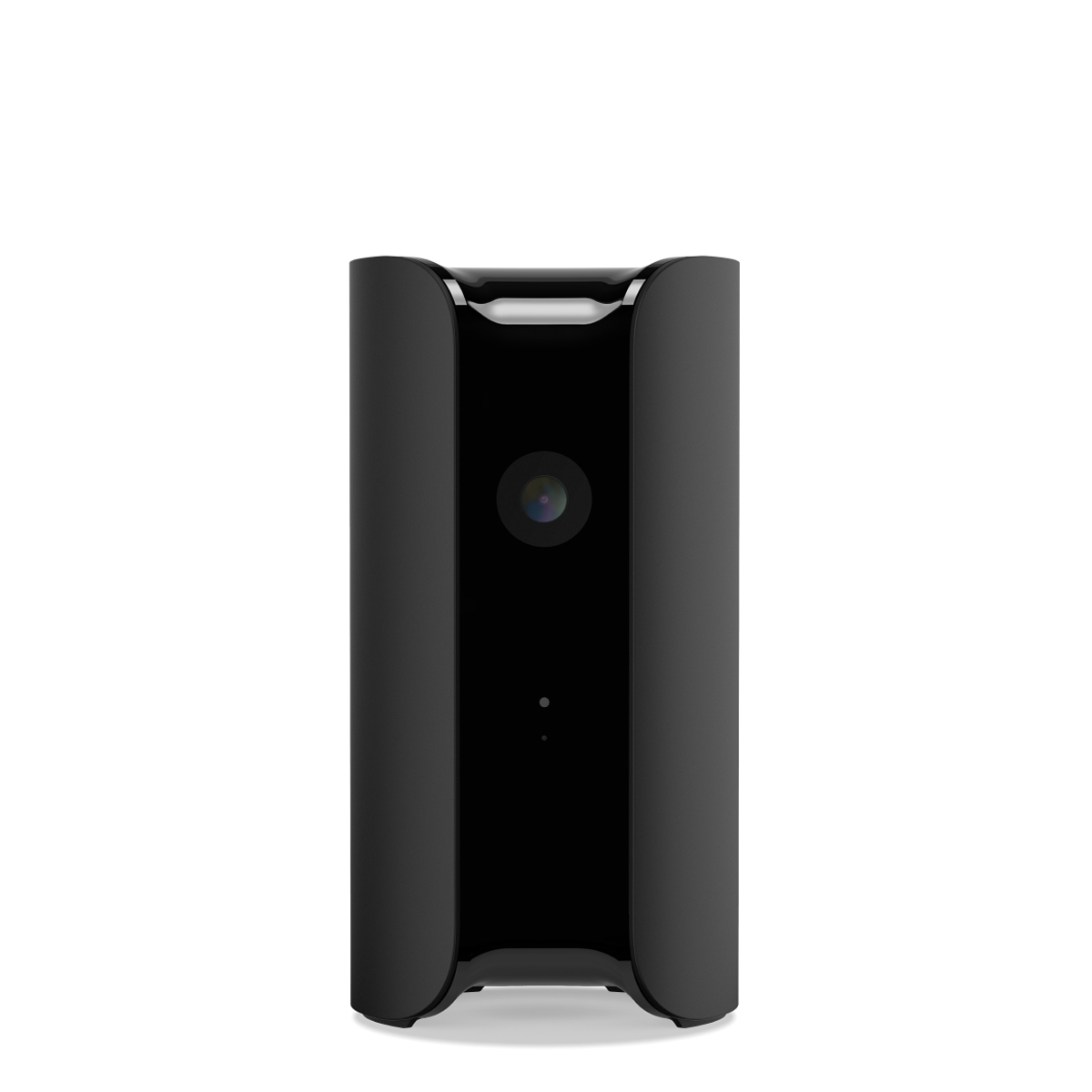
Elegantly styled, the Canary Pro offers advanced monitoring of air quality and temperature as well the security features you expect. Read more below…

You can use this indoor model from the popular Arlo range with or without a subscription, and there’s a reassuring privacy shield. Read more below…
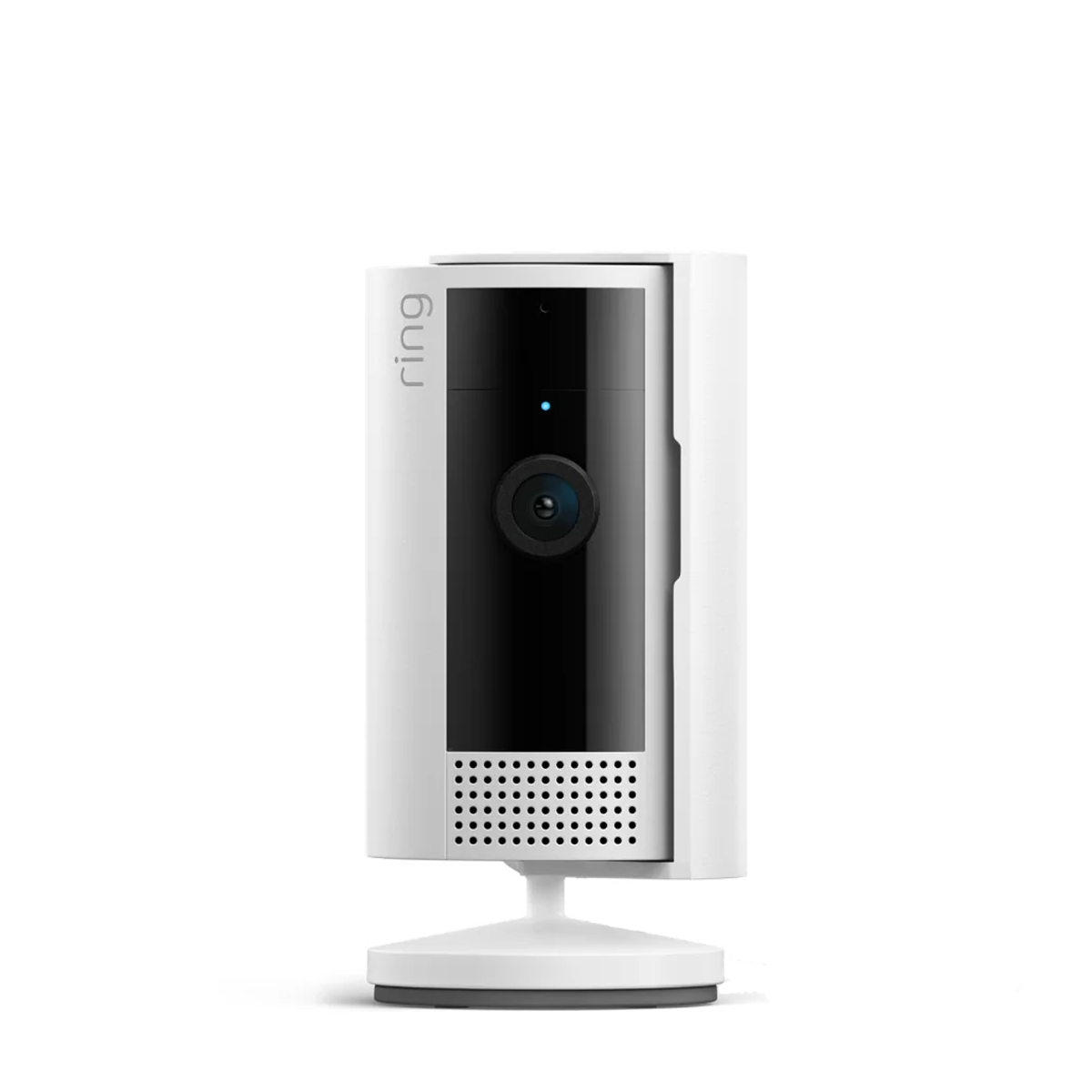
The privacy guard in this camera blocks sound and vision while it’s active, and you can zone off selected motion detection areas. Read more below…
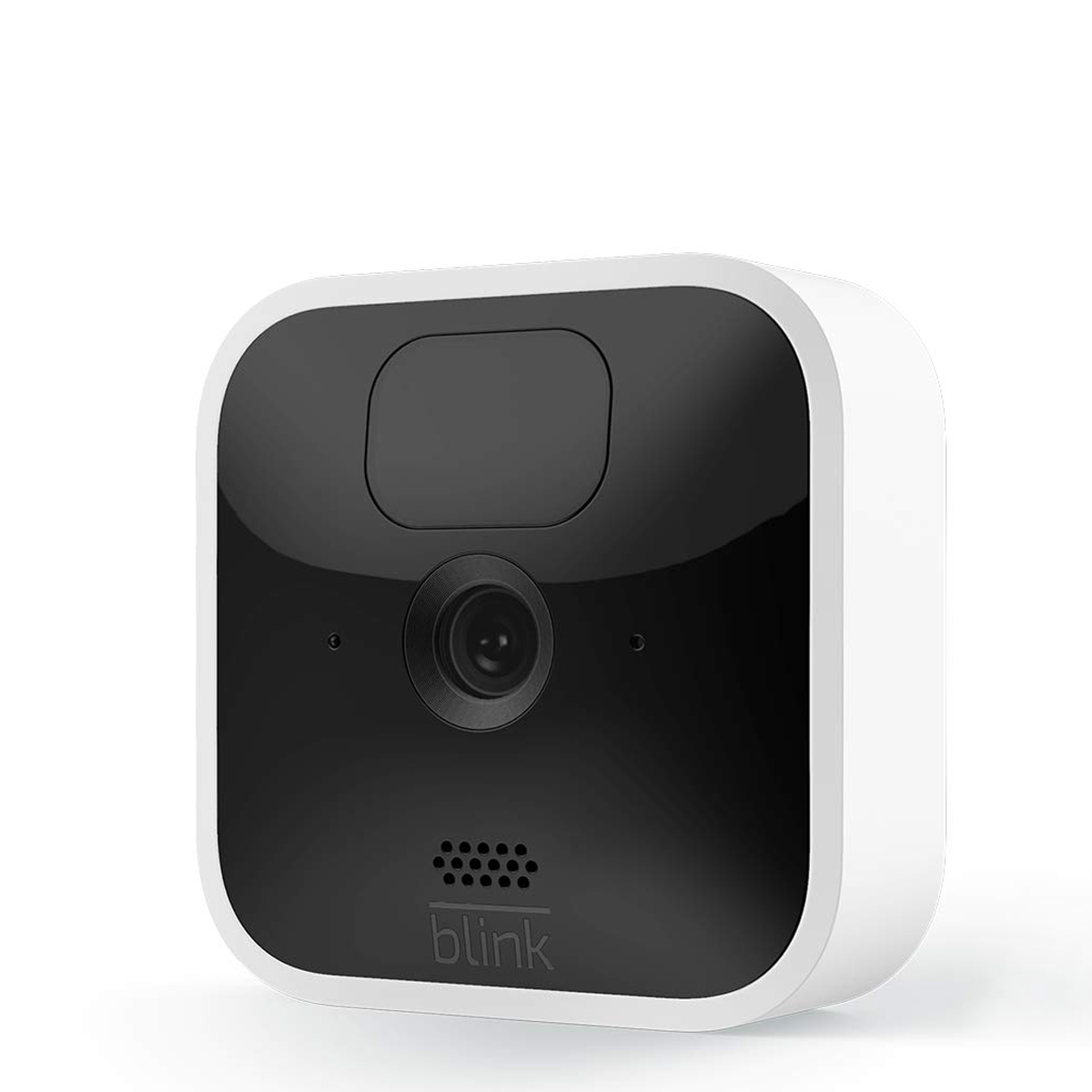
With battery power (up to two years for one set) and Wi-Fi, this camera needs no cables, so you can position and set up with ease. Read more below…
View the full list ⤵
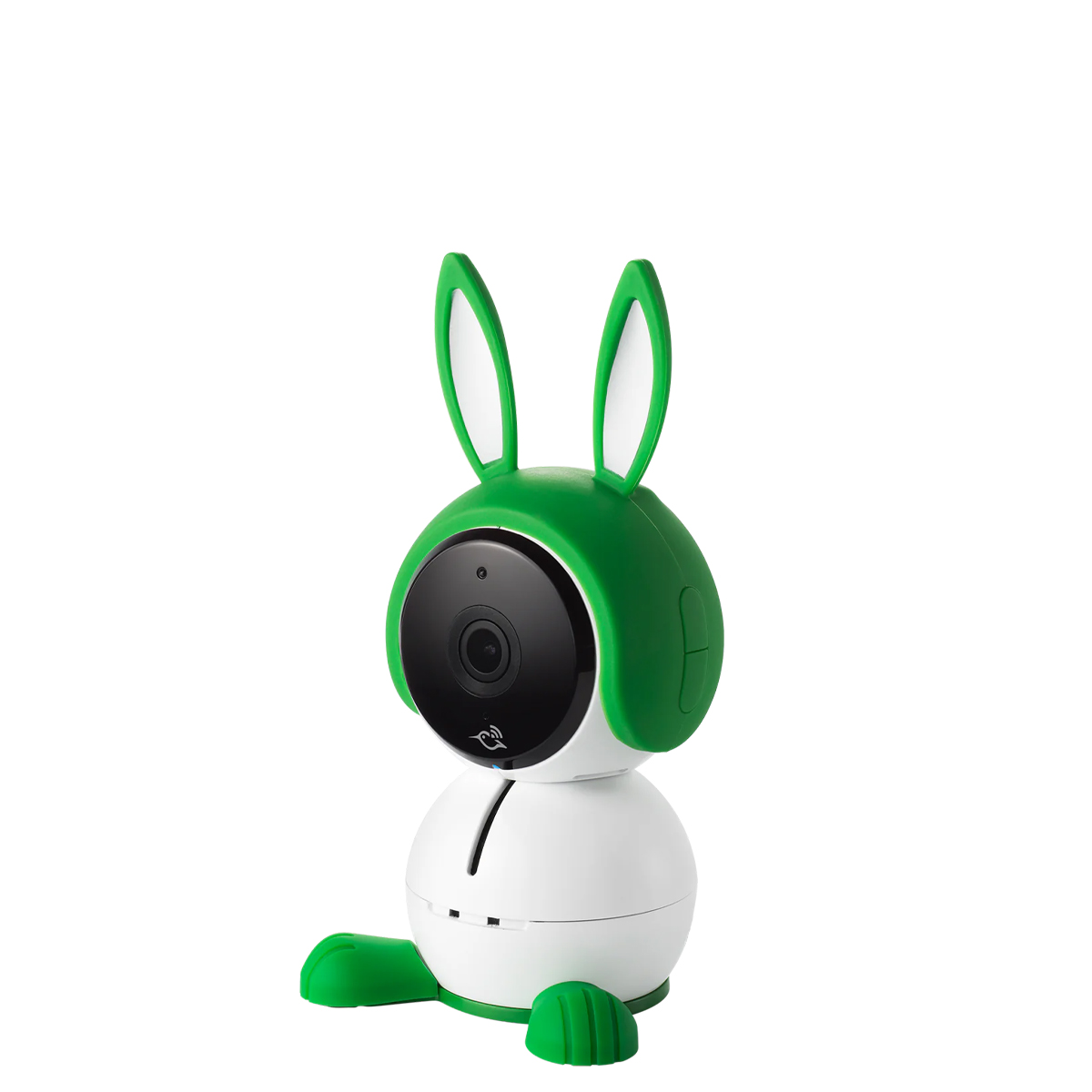
It’s not just baby-friendly because of the bunny ears – it monitors air quality, plays lullabies and offers a night light. Read more below…
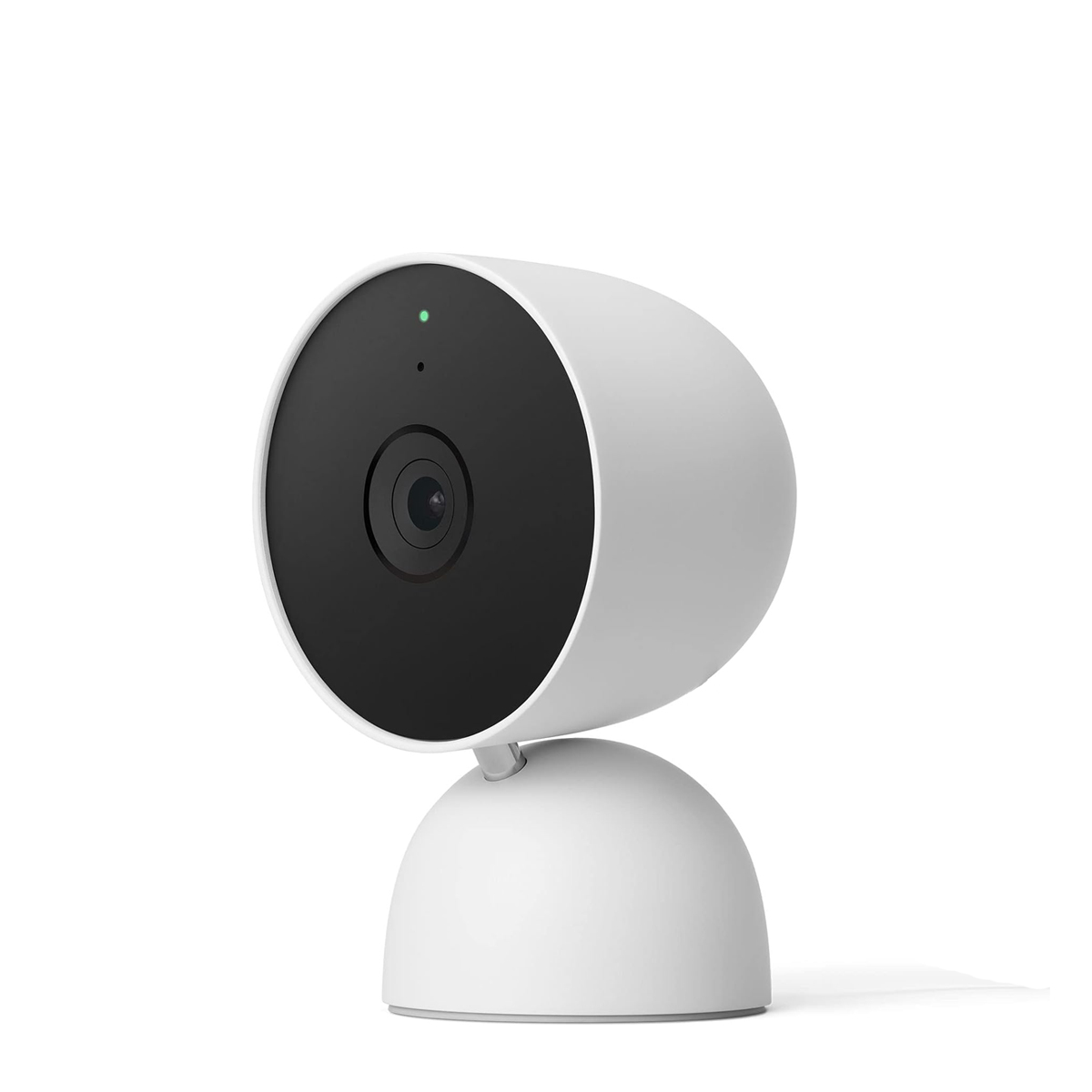
Made to work with the Google Home app, this camera comes in a range of styles and uses on-device AI to speed up alerts. Read more below…
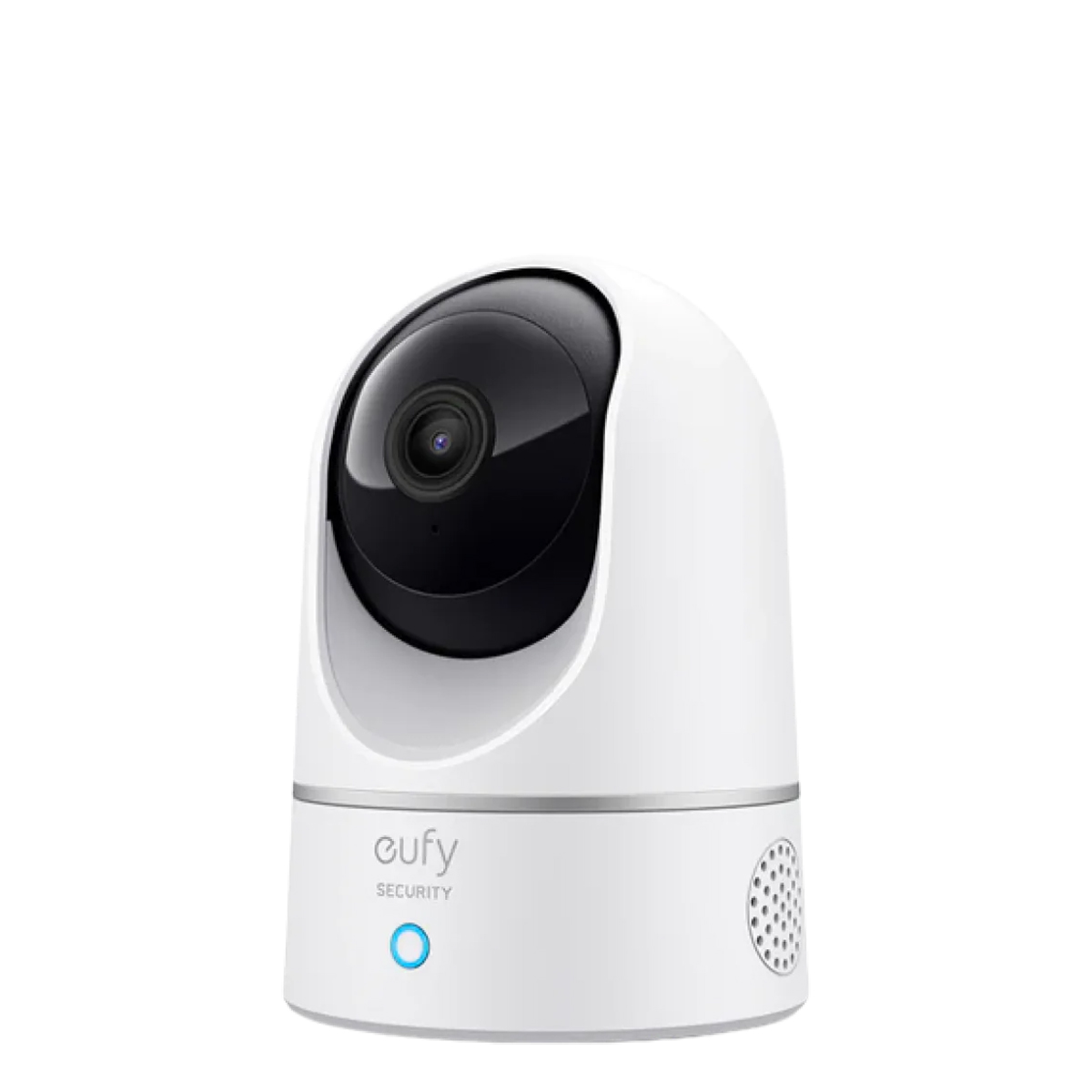
This camera can follow a subject around the room once detected, with AI telling the difference between humans and pets. Read more below…
Best indoor security cameras
Why you can trust Digital Camera World
Best indoor security camera overall
1. Wyze Cam v3
Specifications
Reasons to buy
Reasons to avoid
The original Wyze Cam compact cubic camera could do a lot for comparatively little, so where could Wyze go next? It turned out that, while staying true to the competitive pricing, the Seattle-based company has managed to stay at the top of the compatibility game – with Alexa, Google Assistant and IFTT support.
The camera is also waterproof, so can be positioned outside, has cheaper monthly cloud storage than most other brands and offers onboard storage with a microSD card slot. It also boasts color night vision, so it really has the tech side sewn up, at least for the price.
However, according to The Verge, there have been some serious privacy incidents with Wyze's online viewing software, with people seeing into other users’ homes, so it might be sensible to check that your camera firmware and app software are up to date.
Best budget indoor security camera
Specifications
Reasons to buy
Reasons to avoid
While Amazon’s Ring series hardly breaks the bank, the similarly Amazon-owned Blink Mini costs even less and is even smaller - and ranks as one of the best cheap security cameras around. Despite the low price, its cunning design allows the base to be connected to either the bottom or the back of the camera, or detached altogether, for different and discrete mounting options. There’s also a cable tidy.
The camera is easy to set up and captures very natural color, which – with the optional Sync Module 2 – can be recorded without subscription to a MicroSD card. In night mode the infrared light (invisible to people) seems to flood subjects, but it can be turned down in the settings. Even though this camera is so accessibly priced, it is compatible with Echo Show (Alexa with a screen) and has a fully featured app (iOS/Android) – the only thing that’s missing is a simple way to dismiss the red-circle notification alert without deleting footage.
Read more: Blink Mini review
Best premium indoor security camera
Specifications
Reasons to buy
Reasons to avoid
It’s not the smallest, or the newest, but the Canary Pro has an elegance all of its own, which is why you might find it just fits better with your home’s look than other cameras. It’s also one of the few indoor cameras to offer Ethernet connection, which may excite some looking to reduce the load on their Wi-Fi.
Whichever way you choose to connect, alerts and clips are streamed to an app that is enjoyable to browse, and there’s an ear-splitting 90dB siren built-in should you want to ‘surprise’ any unwelcome guests you spot while monitoring. The Pro also boasts air quality, temperature and humidity monitoring, which can be strangely fascinating.
The cost of ownership of the Canary Pro, or indeed its siblings, is a little higher than competitors if you choose to use the cloud service (and you will be nudged hard in that direction when setting up); but if you side-step that, you do get one day’s storage of clips which is better than most.
Read more: Canary Pro review
Best indoor security camera for features
Specifications
Reasons to buy
Reasons to avoid
Arlo is a big name in the smart security space, so there is a fair chance you’d like an indoor camera that integrates with its system. If so, you’re in luck – the Essential Indoor Wi-Fi camera is that product. The elegant design will look good in many homes, but perhaps the best touch is the privacy shield. When the camera is ‘disarmed’, a plastic shield physically moves to block the lens, which is very reassuring while leaving open the option to remotely arm and open the cover.
With power drawn from an outlet, there is no need for batteries to stay connected, and you can opt to use this device alone (it needs a Wi-Fi connection) or with the extra features available through an Arlo SmartHub. Apple HomeKit users will find that Arlo’s hub is the only way many of the company’s devices can be persuaded to use Apple’s cloud storage, but Arlo does offer its own subscription.
Read more: Arlo Essential Indoor review
Best indoor security camera for privacy
Specifications
Reasons to buy
Reasons to avoid
Ring – an Amazon-owned company – offers a series of cameras (in a choice of black or white designs) to fit any room, plus smart doorbells to complement them. All the cameras are simple to install. You can use a phone app to see a live view, but if you have an Echo Show (basically Alexa with a screen), you can simply bring up the same feed with a spoken command.
The system is made possible through the Ring Protect cloud service (there’s a 30-day free trial), which includes phone alerts when it spots motion. You can limit detection to a defined area in the camera’s field of view, should you choose to.
This revised second-generation model includes a physical privacy guard (that also turns off the microphone). The image quality is at the higher end, too, and Ring's pre-roll feature has been implemented with this version, which means this camera starts to capture movement earlier than most.
Read more: Ring Indoor Cam review
Best wire-free indoor security camera
Specifications
Reasons to buy
Reasons to avoid
A relatively recent addition to the Blink line, this third-generation indoor model strips the weatherproofing found on its outdoor sibling, but still offers power from two AA cells rather than USB. Setting up a battery-run camera can be considerably less than irksome than running another cable around your home, and the battery should manage an impressive two years (as long as it’s not triggered too often). The camera is 1080p, so it holds up against others.
On the downside, you can’t record an extended live view without pressing a button on your app, but the software is well-designed, with easy-to-use features like two-way talk. The app makes it straightforward to limit alert regions, as well as time and sensitivity for the motion trigger; you can even mark areas as non-recording for privacy or, at the other end of the scale, disable the camera’s blinking status light for discretion. A mount is included in the box.
As with the Blink Mini, you can record footage locally, but the Sync Module 2 is required – not optional – for your first Blink camera; that’s why you’ll see them sold in ‘kit’ and ‘add-on camera’ packs.
Read more: Blink Indoor review
Best indoor security camera for baby monitoring
7. Arlo Baby
Specifications
Reasons to buy
Reasons to avoid
Just to clear something up, the Arlo Baby can be physically twisted so the ‘head’ is looking where you want it, but it’s not motorized for remote adjustment. What you can do remotely is adjust the field of view in the app (from 90˚to 130˚), so there is still a good deal of flexibility. Better still, the app can also remotely engage a white noise generator, a lullaby player and a hue-adjustable night light. Having seen some of my young son’s preferences in kids’ TV, I can see why this would appeal, and you can detach those cute ears as soon as he or she announces they are too grown-up.
In terms of sensors, there is a thermometer, a humidity sensor and a Volatile Organic Compound detector (which would spot methane, carbon monoxide, or an especially strong fart). The video quality is excellent, comfortably beating most baby camera monitors, but a surprising secondary benefit of the Arlo Baby’s sheer versatility is that it tidies other devices (night-light, music player, two-way speaker) out of the room.
Best indoor security camera for Google Assistant
Specifications
Reasons to buy
Reasons to avoid
Nest is making on-device machine learning a big part of its cameras, as well as polishing the styling into a more lamp-like look, made partly from recycled content. With a cable over 3m (9’) long, you’ll have no problem positioning it to get a clear view of a room, and it connects via the Google Home app. The on-board AI distinguishes between people and other moving subjects (like pets), so alerts can be quicker than those which depend on server-based systems to ID their subject, and (perhaps more excitingly) don’t require the payment of a monthly fee.
We liked the range of styles, including the option of a wood-effect base, and cannot argue with the simplicity of the guided install and operation of the Google Home app, or of using the Nest Aware subscription to scroll back through time. The three hours of free event storage included seems like it might lure you into one of these packages! The option of having the camera remain inactive until you leave the home is very reassuring, too, and easily set up.
• This camera replaces the older Nest Cam Indoor, which might be around for a bargain price. See our Nest Cam Indoor review .
Best indoor security camera for pan and tilt
Specifications
Reasons to buy
Reasons to avoid
The Eufy 2K cameras, including this pan-and-tilt version (PTZ) and a more traditional cube, take advantage of their crisper image resolution to help the on-device AI detect humans or pets and determine if what’s happening is relevant to you. They’ve also managed to beat the big names in terms of smart home integration; unlike some brands, Eufy doesn’t have a reason not to play nice with Apple HomeKit so, refreshingly, it does work.
Night-light infrared manages 10m/30ft thanks to eight LEDs, and on the reverse is a MicroSD card slot for recording footage to. There is also a Micro USB socket for power and, on the base, a sturdy mounting plate attachment. Setup is made easy by the app, and it seems to offer no complaints about choosing the local storage option even though there is no subscription (admittedly your footage is potentially only stored within reach of a bad actor). Ultimately, though, it’s great to be able to choose whether you want a fee-paying subscription or not, and still be able to record.
Read more: Eufy Solo Indoor Cam 2K Pan & Tilt (E220) review
How to choose the best indoor security camera
What are the main features I should look out for?
Choosing a camera is as much about choosing its ecosystem as the device itself; Nest, Ring, Blink, Wyze, Arlo, and other brands featured in this list also have cameras in our best outdoor security cameras list, as well as offerings in the video doorbell camera space. If you like a tidy smartphone without too many apps, sticking with a single brand will help.
Among the features you should look for are night vision. This is usually lit by a tiny infrared light in the camera, so the picture appears black and white but the light itself is invisible.
Another consideration is how many cameras you’ll want; some cloud subscription charges for video recording or detection features are charged per camera. To keep this cost down, take a look at the field of view – a wider angle view (like 130˚) will give you a slightly more distorted image, but allow you to see more space with just one camera.
1. Location
Think about where you want to put each camera; is that area subject to water ingress (in which case, look at our best outdoor security camera list)? Think too about how you will power the camera? Some have built in batteries, others need constant power – so will need access to a socket. If the camera has local video storage, like a MicroSD card, be mindful of accessing that from time to time too.
2. Privacy
It’s also worth considering privacy; if the camera is making a recording, can it simply be played or will the recording require a password to play? If the recording is only accessible by app, then it’ll probably need a password. Will other users share your account (or be suspicious if you don’t share)?
3. AI features
Something you absolutely shouldn’t neglect is person or pet detection of some form (and whether it’s in the camera or only available via the subscription). It makes a massive difference because the better the detection system, the less likely the system is to alert you with unwanted false alarms.
4. Subscription options
Understanding what you do, and don’t get, for the tier of subscription you choose is significant. Manufacturers are keen to sell AI features, but in reality they’re often dependent on the fee – so are you happy to pay it? In most cases you don’t have to, but you’ll get little more than live view and two-way talk (features which require no third-location server support).
5. Trust
This is a matter of when numbers 2 and 4 (Privacy and Cloud Subscription) collide; cloud subscriptions are a significant part of this industry and you need to ask yourself how confident you are that you’re sharing your data with the right organisation. Look for systems in which any remote storage is encrypted (i.e. so it can never be understood by the cloud location). If you don’t trust the company, don’t send the data (video from your home). There are a lot of brands you’ve never heard of on retail sites; in a world when even the big names have had issues it is sensible not to go with a company you couldn’t track down.
6. IFTTT: If This Then That
IFTTT is a cross-platform service that allows you to create ‘Applets’; small instructions which help meld the variety of brands many of us live with, and uncorking the true power of smart home tech. For example, you can use the GPS in your phone to turn on security, or turn off cameras) as you leave or arrive. Some cameras support the IFTTT platform, making it easy to take advantage of their motion sensing and, for example, turn smart lights on.
7. Window warning
There are two things to remember if you plan to position your camera looking through glass. Firstly check local laws about recording people in and place any required warnings. Secondly remember that night modes rely on built-in infra-red illumination which, while not visible, will reflect just like visible light. Glass will not only reflect much of the light back so it doesn’t reach your subject, but obscure the view too – double whammy.
How we test indoor security cameras
We review cameras by setting them up and using them for a few days, trialing them in a few different locations to see how the alert system performs, as well as assessing the quality of the video and responsiveness of the recording in different lights.
Find out more about how we test and review on Digital Camera World
The best camera deals, reviews, product advice, and unmissable photography news, direct to your inbox!

With over 20 years of expertise as a tech journalist, Adam brings a wealth of knowledge across a vast number of product categories, including timelapse cameras, home security cameras, NVR cameras, photography books, webcams, 3D printers and 3D scanners, borescopes, radar detectors… and, above all, drones.
Adam is our resident expert on all aspects of camera drones and drone photography, from buying guides on the best choices for aerial photographers of all ability levels to the latest rules and regulations on piloting drones.
He is the author of a number of books including The Complete Guide to Drones, The Smart Smart Home Handbook, 101 Tips for DSLR Video and The Drone Pilot's Handbook.
